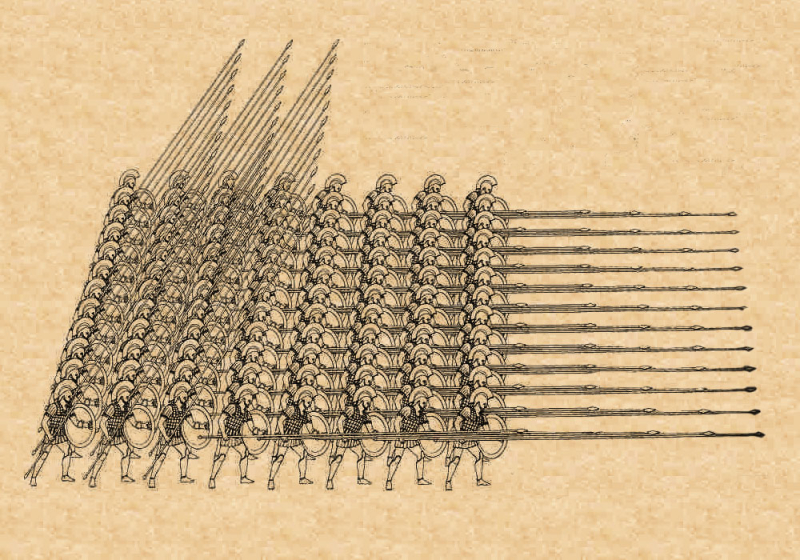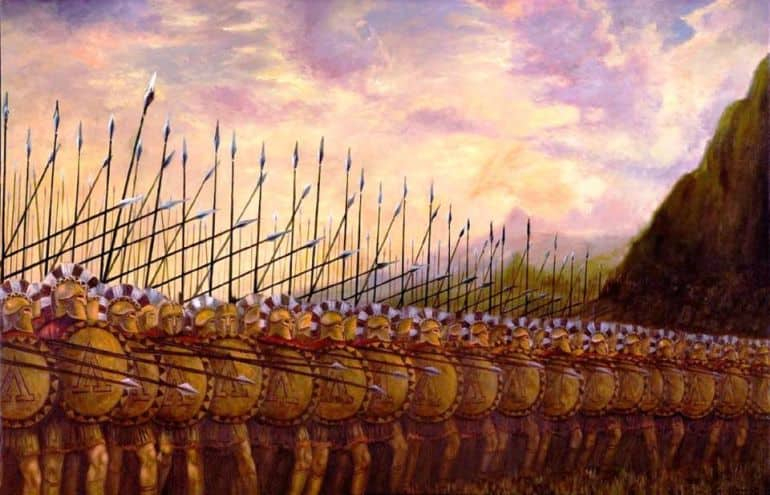The Greek's famous Phalanx formation is used in the battle
One of the most interesting facts about the Battle of Thermopylae is that the Greek's famous Phalanx formation is used in the battle. A phalanx is a tactical configuration in military science that consists of a block of heavily armed men standing shoulder to shoulder in files many ranks deep. Many spear-armed warriors have historically battled in phalanx-like formations. It was fully perfected by the ancient Greeks and survived in modified form into the gunpowder era, and it is now regarded as the start of European military evolution.
The phalanx was a rectangular mass military formation made up of heavy soldiers armed with spears, pikes, sarissas, or other pole weapons. The phrase is most commonly used to characterize the employment of this configuration in Ancient Greek warfare, but it was also employed by ancient Greek writers to denote any massed infantry formation, regardless of equipment. The phalanx may be deployed for combat, on the march, or even camped in Greek writings, representing the mass of men or cavalry that would deploy in line during battle. They marched forward as a unified front.
The Greeks favored heavily armored hoplites at the Battle of Thermopylae, organized in a densely packed formation known as the phalanx, with each man carrying a massive round bronze shield and fighting at close quarters with spears and swords. At close quarters, the larger spears, heavier swords, better armor, and rigorous discipline of the phalanx formation meant that the Greek hoplites would have all of the advantages, and the Persians would struggle to make their greatly superior numbers count in the confined constraints of the terrain.
The Greek tactic of feigning a disorganized retreat and then turning on the enemy in the phalanx formation also worked well on the first day, reducing the threat from Persian arrows, and the hoplites may have surprised the Persians with their disciplined mobility, a benefit of being a professionally trained army. The second day followed the same pattern as the first, and the Greek forces maintained control of the pass. However, an unscrupulous traitor was about to swing the scales in the invaders' favor.












